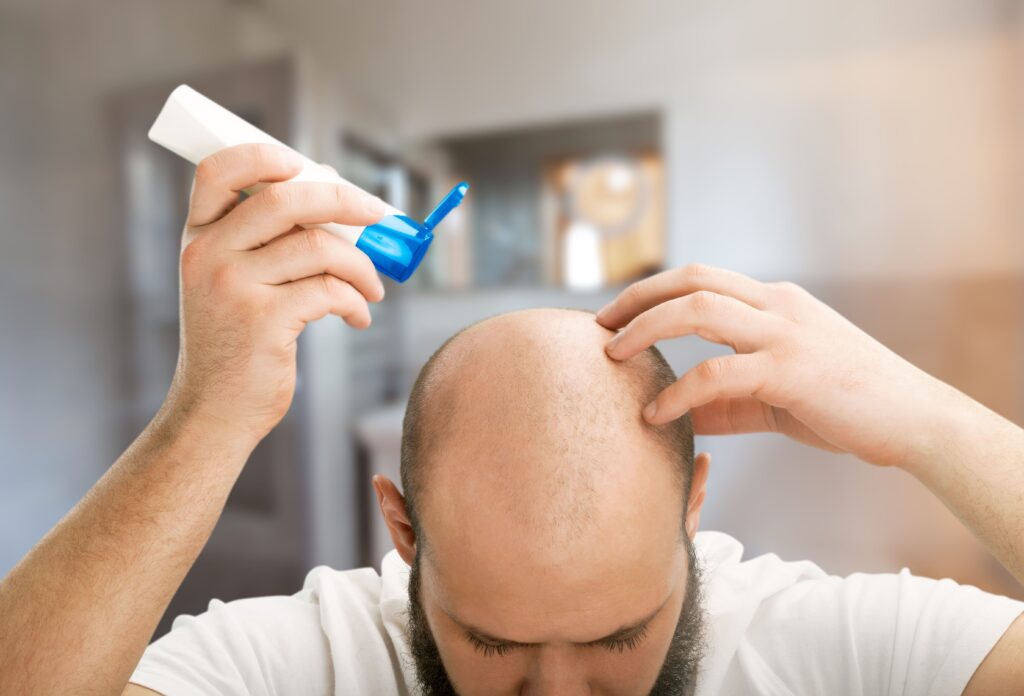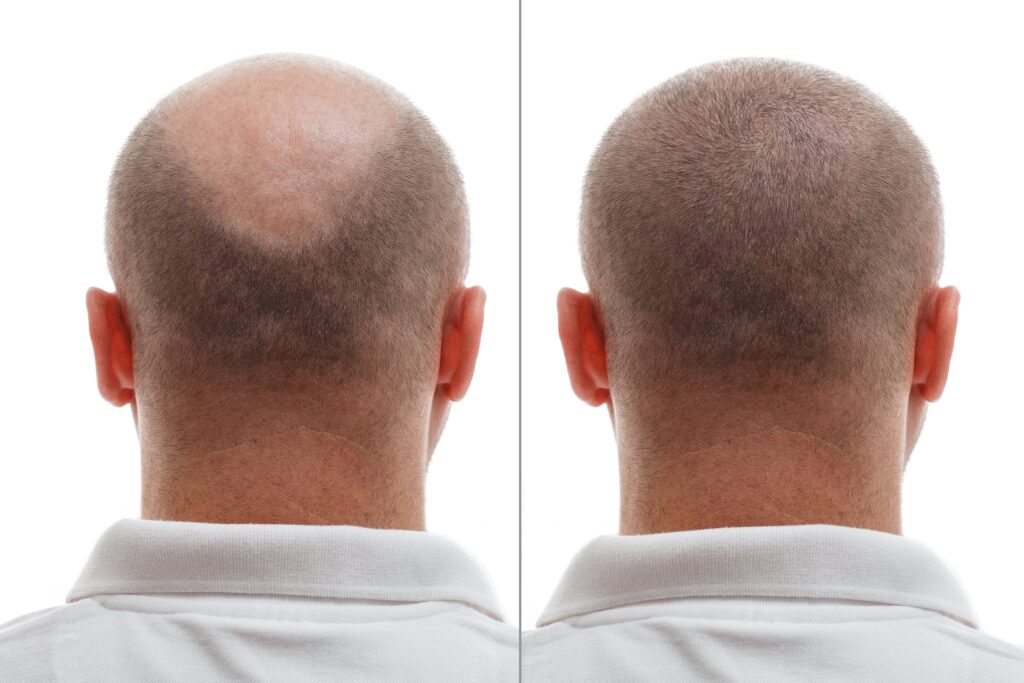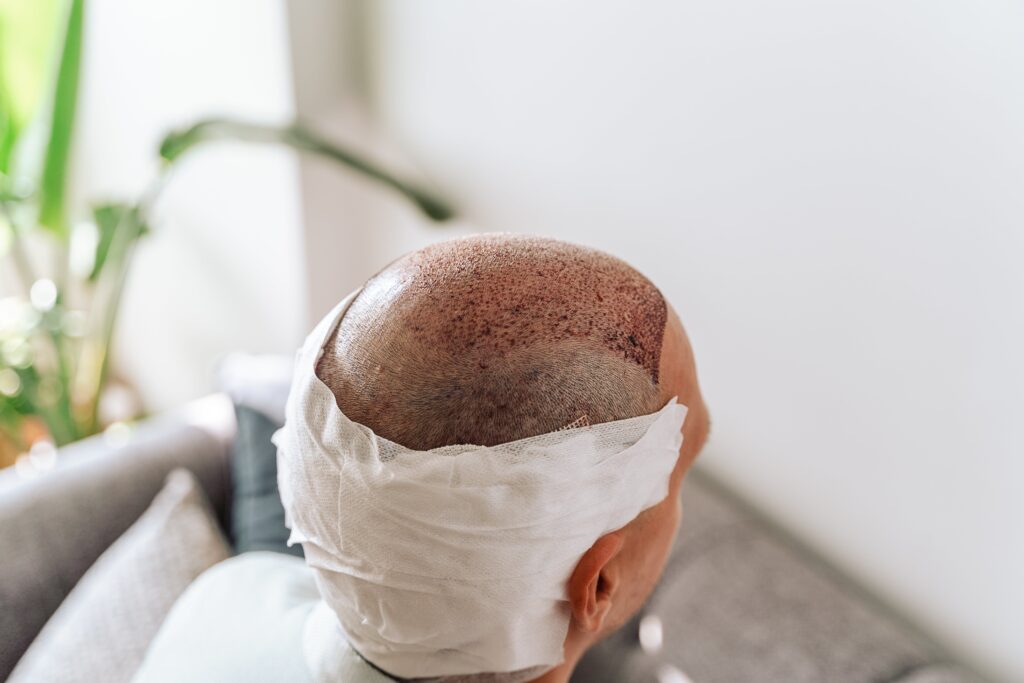Hair shedding after hair transplant surgery can come as a shock to many. If the implanted hairs fall out again after a few weeks one might think that the hair restoration procedure was a failure. Temporary hair loss is completely normal, however.
Nowadays, hair transplantation is no longer an abnormal cosmetic surgery procedure. Cosmedica’s Dr. Levent Acar has already helped many people to improve their quality of life and self-confidence. Because beautiful, full, and healthy hair still stands for success and youthfulness even in today’s enlightened society. This is not the case with thinning hair or bald patches on the head.
After a few weeks, however, many patients are shocked when the freshly transplanted hair suddenly falls out. However, this is no reason to panic, but a completely normal process.
Why does hair shedding occur after a hair transplant?

Hair that has been transplanted using the modern Follicular Unit Extraction or FUE hair transplant technique or the more advanced methods such as the Sapphire DHI method will initially continue to grow after the hair transplant.
However, after about two to four weeks, the freshly transplanted hairs fall out again. Shedding occurs because the hair grafts – regardless of the technique used to transplant them – are briefly cut off from the blood supply, and therefore can’t be provided with nutrients by the body.
There is no reason to panic, though. The hair follicles remain in the scalp and new hair grows again after about 3 months (depending on the predisposition).
Usually, after 9 to 12 months the patient can enjoy full and beautiful head of hair again. However, sometimes this can take up to 18 months. The transplanted hairs have the right genetic information, so they last a lifetime.
When shedding of transplanted hair occurs after the procedure, most people talk about shock loss. However, this is not quite correct, the correct term is “shedding”. Shock loss is something completely different and can occur in the recipient as well as in the donor area.
And by the way: hair does not always fall out a few weeks after a FUE hair transplant. In about 5% of patients, hair continues to grow as if nothing had happened.
Why the patient is an important factor for the success of a hair transplant

A hair transplant can only be successful if the patient is actively putting in some work in its post operative care. In the first days after the procedure, the grafts are still extremely sensitive. Therefore, the scalp should not be touched at all – except when washing the hair – and should also be protected from bumps and blows.
Likewise, all physical exertion should be avoided. If blood pressure or pulse increases, there is a risk that the wounds will start bleeding again and that the freshly transplanted grafts will be washed out right away.
The healing process should be completed after about 15 days. Sauna, solarium, and swimming pool are possible about three weeks after the procedure. Light training is possible after about 20 days.
Dr. Levent Acar gives his patients precise instructions on how to behave after the hair transplant. The team is also available to answer any further questions. The patient’s cooperation is essential to achieve the best possible result.
Hair shedding due to "dense packing" - shock loss in the transplant area

The situation is somewhat different if part of the hair in the recipient area falls out due to so-called dense packing. This occurs when the grafts are placed too close to each other. This can traumatize the surrounding tissue to such an extent that the surrounding hairs also fall out.
Another consequence of dense packing is an extremely unnatural result. The transplanted hairs look shaggy and stand out from the head. This is also called the “doll head effect”.
The risk of shock loss due to dense packing is particularly high when the treating physician and his team are still very inexperienced.
Dr. Levent Acar, owner of Cosmedica Clinic, has decades of professional experience. He also constantly attends education and training courses in order to be able to offer his patients the most modern and innovative methods.
Shock loss in the donor area
Shock loss can have various causes:

- Incorrect local anesthesia
Local anesthesia involves injecting saline into the tissue to slightly elevate the scalp. However, if too much solution is injected, increased tissue pressure is created. This in turn prevents the hair roots from being supplied with blood. As a result, the hair falls out.
- Traumatized tissue
In addition to the modern and gentle FUE technique, in which the grafts are removed individually, there is also the FUT technique. Here, a narrow strip of skin is taken from the donor area, from which the grafts are later extracted. This can traumatize the surrounding tissue and lead to shock loss.
- Too many grafts were taken
Even if the hair in the donor area still grows densely and fully, the number of grafts that can be removed is still limited. If the treating physician nevertheless removes more than is actually possible, shock loss can be a consequence.




